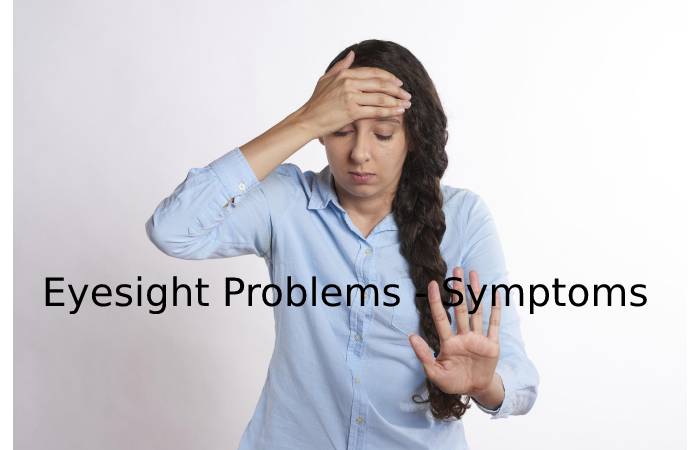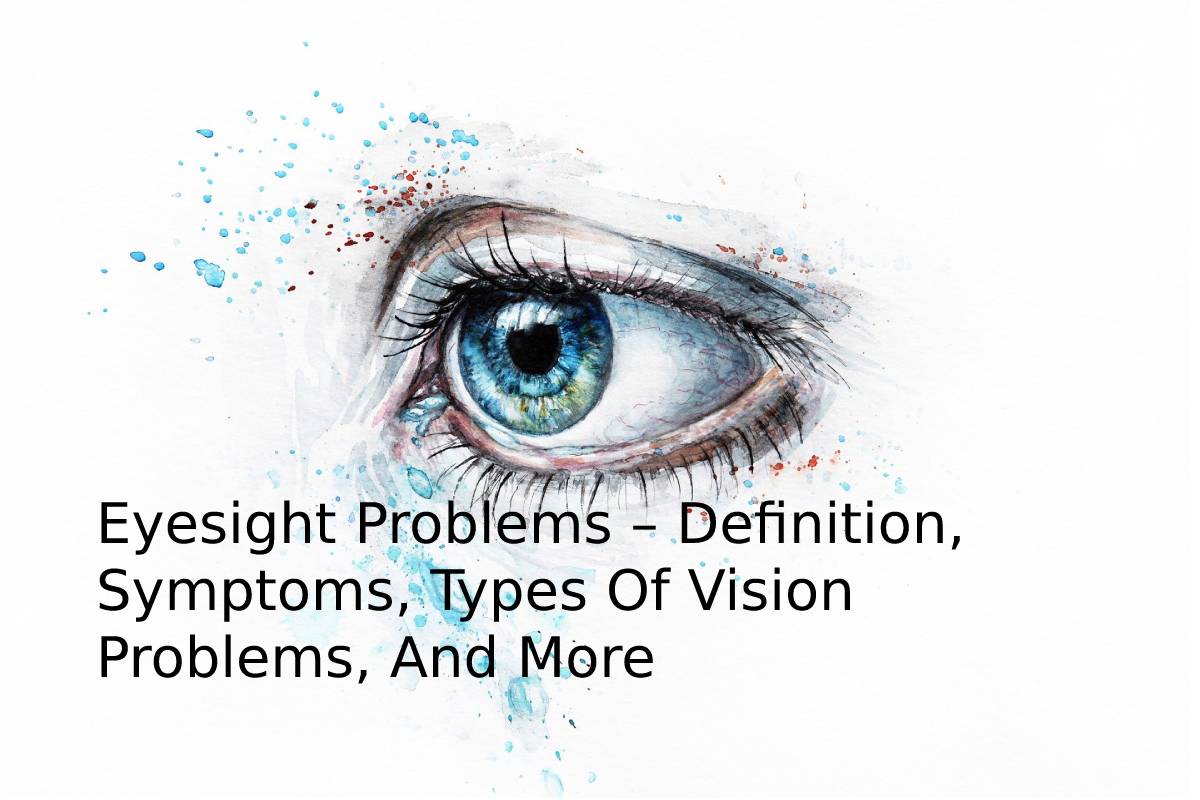Table of Contents
Eyesight Problems – Definition
Eyesight Problems mean eyes are weak or Decreased visual acuity, blurred vision, double vision, or distorted perception of objects. These different vision disorders are caused by more or less frequent conditions, benign or more serious—update on warning symptoms and their causes.
Eyesight Problems – Symptoms

The symptoms, therefore, depend on the nature of the disorder. Vision may be disturbed from far, near, or both.
Sudden loss of partial or total sight: Horton’s disease?
Horton’s disease is one of the autoimmune diseases, the causes of which are still unknown. Temporal arteritis can lead in the most severe cases to sudden, partial, or total loss of vision in one eye (blindness). This complication occurs in 10% of cases if treatment is not implemented quickly. “This is a real medical emergency for the eye,” specifies the ophthalmologist. The another symptoms of eyesight is headache.
Types Of Vision Problems
Myopia, presbyopia, cataracts, farsightedness, etc., are all disorders that affect our vision and daily lives. What problems related to optics do we encounter most often, and what can we do to limit their effects? Because although these terms have entered our everyday language and are not unknown to anyone, their exact meaning is sometimes little known. Not all optical mutuals cover the various expenses related to your sight problem in the same way.
Myopia
The eyeball lengthens, which can bulge the cornea and the lens. As a effect, the light rays do not meet directly on the retina but further forward. The image returned to the brain is therefore imperfect and blurred. To put it simply, the myope sees very well up close and poorly from afar
Brightness So You Don’t Strain Your Eyes.
Wear your glasses when you walk in the street, go to the cinema or drive and check that your glasses are suitable for your sight. Contact lenses are also a good option if you can’t stand glasses. Finally, you can also have recourse to refractive surgery (laser) to correct your myopia if you do not suffer from keratoconus (congenital deformation of the cornea) or corneal herpes.
Hyperopia
Following ocular refraction, an excessively flattened lens, or a slightly curved cornea, the light rays that have become too long will converge behind the retina. This, therefore, implies good vision from afar but blurry when approaching. In a few words, it’s the opposite of myopia.
Astigmatism
In so-called “normal” eyes, the cornea is rounded. In an astigmatic eye, the cornea is somewhat oval. The images are will deforme both near and far and give an imprecise vision: the horizontal and vertical lines are difficult to distinguish, and the contrasts are not very clear. Thus, B and D look alike, just like O and 8.
Presbyopia
The lens is a master of adaptation. Depending on the distance and the luminosity, it can quickly modify its curvature to allow a clear and precise vision. However, over time, it gets tired of a life of hard work, and it tends to thicken while becoming more rigid: this is presbyopia. In summary, the eye sees better from afar.
Glaucoma
Glaucoma is an eye disease that alters the visual field or even amputates due to ocular hypertension or a less good blood supply. Therefore, there is a gradual decrease in the field of vision called “tunnel vision” due to the darkening of the extremities of the image seen and will return to the brain by the altering optic nerve. If left untreated, glaucoma can lead to blindness.
Cataract
As with presbyopia, age causes the lens to thicken and become cloudy. This, therefore, leads to increasingly blurred vision, a decrease in clarity, poor color estimation, the appearance of luminous halos in the field of vision, and glare.
Eyesight Problems – Treatments For Various Eye Disorders
The treatments are multiple, will adapt to the disorder, and, above all, will personalize for each patient. Indeed, the patient’s age, personality, and activities determine factors in the choice of treatment. It is often necessary to associate several therapies to satisfy the requirements of each one. The range of treatments includes glasses, contact lenses, and refractive surgery.
What Are The Causes Of Vision Problems?
A vision disorder is often congenital (genetically determines). They may be due to the anatomical evolution of the eye, mainly its growth, and the evolution of the accommodative power of the lens. Visual defects are also subject to environmental factors.
What Is The Most Dangerous Eye Disease?
A cataract is the first cause of blindness globally (48% of cases of blindness). In France, it affects more than 20% of the population after the age of 65, and nearly two out of three people have cataracts after the age of 85.
What Is The Most Serious Eye Disease?
More ocular severe pathologies. Age-related macular degeneration (AMD) is a sneaky disease. In its early stages, it is almost asymptomatic. The first signs of this eye condition appear around the age of 50.
Conclusion
A vision disorder is an abnormality in the eye’s optical system that distorts images on the retina. It results from a mismatch between the power of the visual system (two lenses forming by the lens and the cornea) and the length of the eye (axial length).

